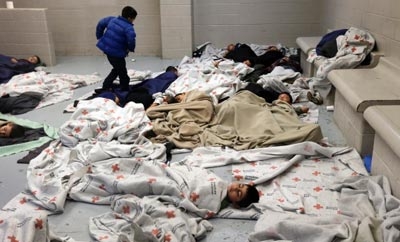US authorities have reportedly discovered gang members among the thousands of unaccompanied child migrants in holding centers, providing another facet to the already complex issue of migrants fleeing criminal violence, but one unlikely to pose a grave security threat.
A Border Patrol report obtained by conservative news site Townhall.com shows at least 16 children currently being processed as illegal migrants have links to the Mara Salvatrucha (MS13) street gang.
Townhall.com also cited anonymous sources who said authorities had identified six youths with criminal records for serious crimes including murder and that gang members in the holding centers had been using the facilities to coordinate activities and recruit new members.
InSight Crime Analysis
The correlation between the deterioration in security in Central America and the recent flood of unaccompanied child migrants from the region into the United States is currently a contentious and highly politicized issue. However, as InSight Crime’s research has demonstrated, there is little doubt that a significant proportion of these migrants are fleeing gang activity and criminal violence.
There are a number of reasons why children with a gang history may be among those flooding across the border. Gangs such as the MS13 begin recruitment at an early age and it is sometimes not voluntary, therefore children may be forced into a gang and can only leave it by fleeing. In other cases children may have joined voluntarily but found themselves incapable of carrying out the acts of violence required as demonstrations of loyalty and commitment; or they may have fallen out with the gang’s leadership or simply want to escape their criminal pasts.
SEE ALSO: Target: Migrants
Nevertheless, it is still possible that some of the youths are active gang members, but this is unlikely to pose a serious security threat to the United States.
Latin street gangs, especially the MS13, already have a presence in the United States and there is ample evidence that they coordinate criminal activities with counterparts in Central America, in particular in El Salvador. Gangs on both sides of the border likely have access to established networks for the movement of arms, drugs, people and money. It is therefore unlikely they would utilize the routes of common migrants, which are arduous, dangerous and risky, for any important gang operations.
The numbers support this; while the US authorities have discovered 16 gang members so far, if Townhall.com’s account is accurate, this is a tiny fraction of the tens of thousands of children crossing the border.

